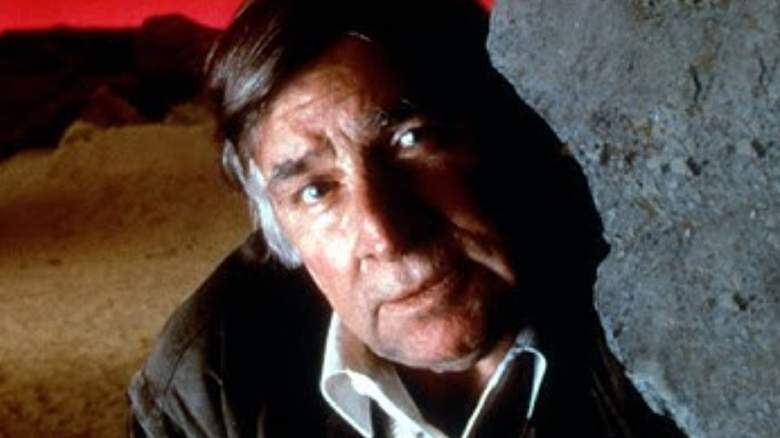
YouTube Gene Roddenberry
Since the debut of J.J. Abram’s “Star Trek (2009)” film and the so-called NuTrek series, which air on the Paramount+ network, much has been written about Gene Roddenberry, and his vision. People from all corners of the internet have been using the term “Gene’s Vision” to show how one show or another is not genuine “Star Trek.”
Roddenberry, the creator of the franchise, would have turned 100 years old this year. Paramount and CBS took that opportunity, along with the 55th anniversary of his show, to host a live-streamed celebration to honor him.
As they call it, Star Trek Day is held each September 8, which marks the first time “Star Trek” aired back in 1966. The episode was “The Man Trap,” and television history was made.
Star Trek Day 2021
To be clear, there seem to be quite a few different definitions of what Roddenberry’s vision is supposed to be and how that applies to modern film and television. Some, like Screen Rant, write that “Star Trek: Discovery” is embracing “Roddenberry’s Vision,” while fans on Reddit argue that Roddenberry’s vision “wasn’t good” and “wildly inconsistent.” On YouTube, user “Major Grin” has made quite a few videos challenging the makers of the modern Trek shows. He regularly asks if they “betray” Roddenberry’s vision.
Even Jonathan Frakes (Riker) said that Roddenberry would not have been happy with some aspects of “Star Trek: Picard,” especially the episode “Stardust City Rag.”
What Made a “Star Trek” Episode?
Since much of what Roddenberry thought and said about the times he lived in was infused into “Star Trek” — as he explained for the “Hollywood Reporter” in 1966 — it makes sense to look at the early Trek shows to understand the underlying meaning behind his “vision.”
This is a tricky proposition. In the latest episode of “The Inglorious Treksperts,” hosts Mark A. Altman, Daren Dochterman, and Ashley Edward Miller debated on what exactly made a story one worthy of “Star Trek.” It turns out that not even the folks who Roddenberry had working for him in the ’60s weren’t entirely sure.
“Everyone thought they understood what a ‘Star Trek’ episode was — when in fact very few did understand,” Altman said when talking of the TOS writers who returned to work on “The Next Generation.” “Even among the staff, early on, which was Gene, and Bob Lewin … and then you had David Gerrold, D.C. Fontana — even they couldn’t all agree as to what was a ‘Star Trek’ episode.”
Five Items That Make a “Star Trek” Story
If Roddenberry, Fontana, and Lewin couldn’t remember what made a good Trek story, perhaps they should have referred back to the series handbook that Roddenberry created for “Star Trek: Phase II.” This was the sequel to “The Original Series,” which was planned to launch in the 1970s and eventually became “Star Trek: The Motion Picture.”
This document was written to guide writers and producers on the parameters to create a new series. It was a guide for those Roddenberry planned to work with and put down on paper much of what he thought should be in the show.
Roddenberry detailed five items in the handbook that must be followed to create a “Star Trek” story. Those were: the stories were about people; framed in an optimistic vision of the future; from the point of view of captain and crew; and the regular cast are each episode’s heroes, and the home base of the crew is the Enterprise.
Roddenberry also noted that writers must “maintain reality.” He said that this was “the crucial point” for doing science fiction.
Gene’s Vision: Diversity
As he wrote in the “Phase II” handbook, the Enterprise crew should be “completely multi-racial.” “Even in this future century, we will see some traditional trappings, ornaments, and styles that suggest the Asiatic, the Arabic, the Latin, etc.”
In this interview from 1988, Roddenberry noted that through “Star Trek,” he could comment on “diversity.”
“In fact, the world has so many diverse elements,” he said in the interview. “We should be pleased that the world has diversity rather than longing that everything be the same.”
Leonard Nimoy often said that what set Roddenberry’s creation apart from the other science fiction franchises was optimism.
“A lot of science-fiction is nihilistic and dark and dreadful about the future, and ‘Star Trek’ is the opposite,” Nimoy told the New York Times in 2009. “We need that kind of hope; we need that kind of confidence in the future. I think that’s what ‘Star Trek’ offers. I have to believe that — I’m the glass-half-full kind of guy.”
In his own way, writer Andrew Hales summarized what Roddenberry’s vision was all about:
“Star Trek shows us that no matter how bad the world outside our windows gets, there is still a bright light at the end and that humanity has the potential to be so much more than it has ever been.”
READ NEXT: The Side-Effects of the Skimpiest Costume in ‘Star Trek’ History